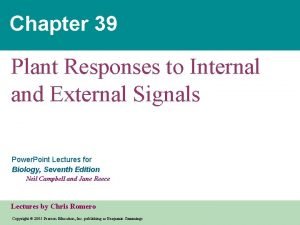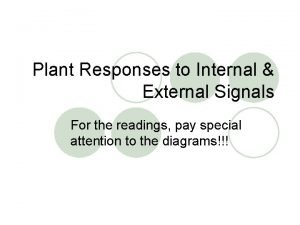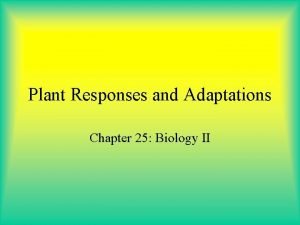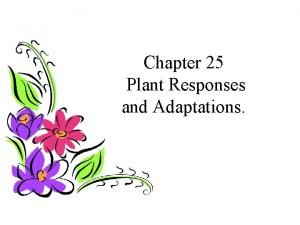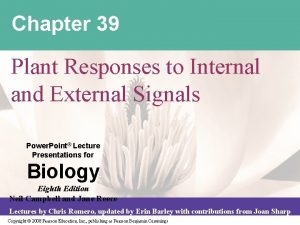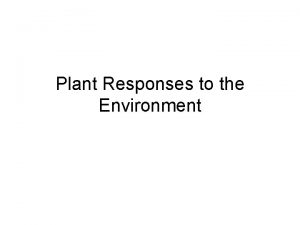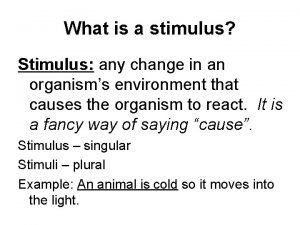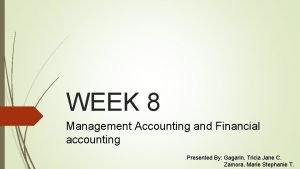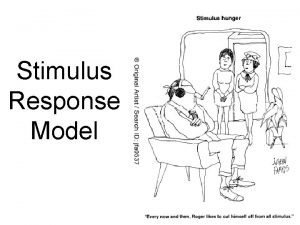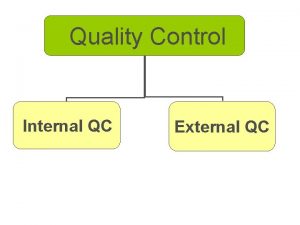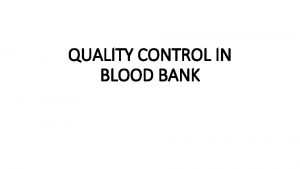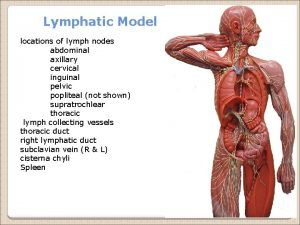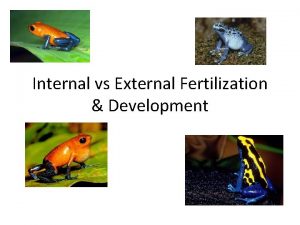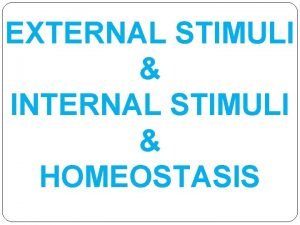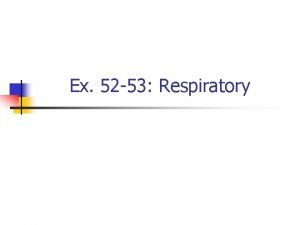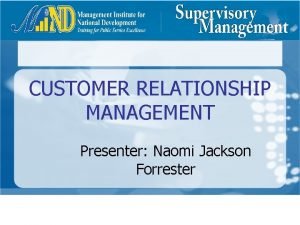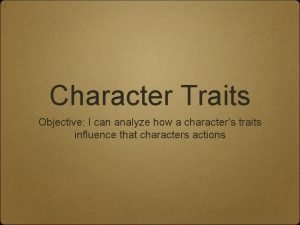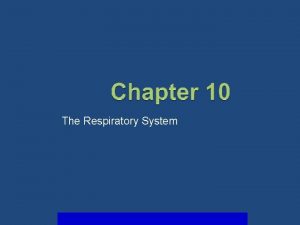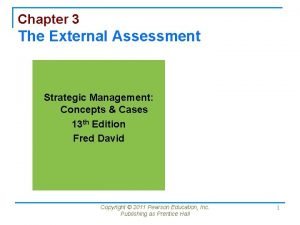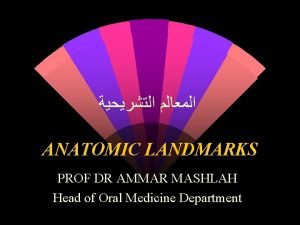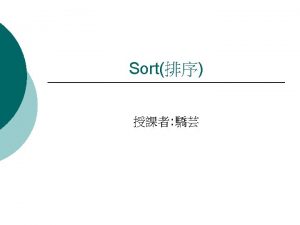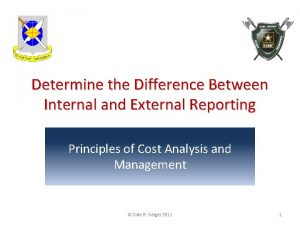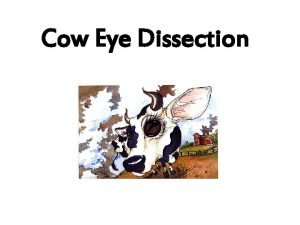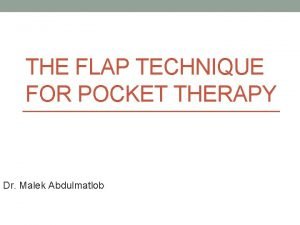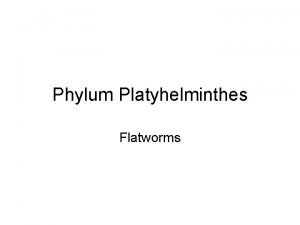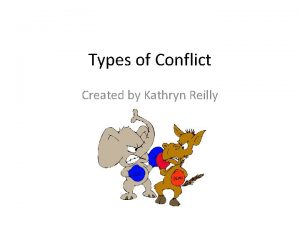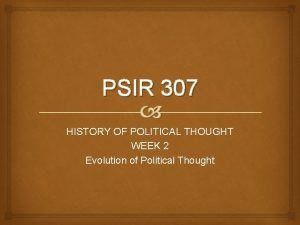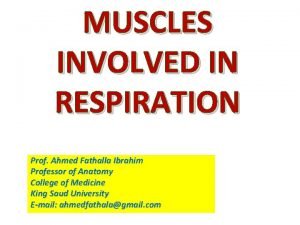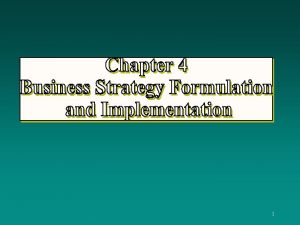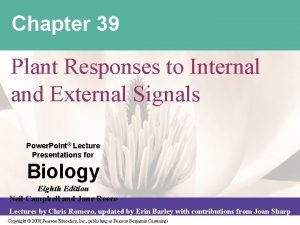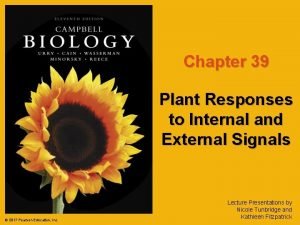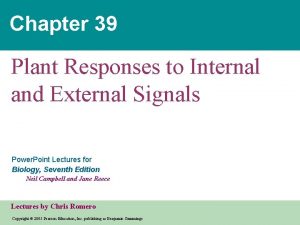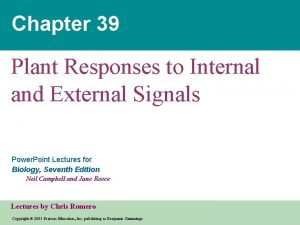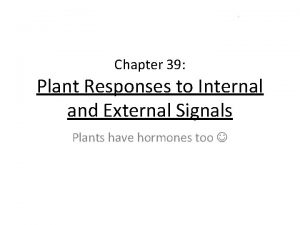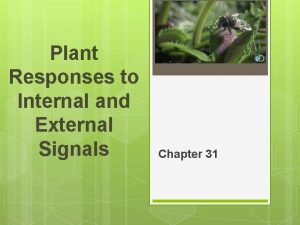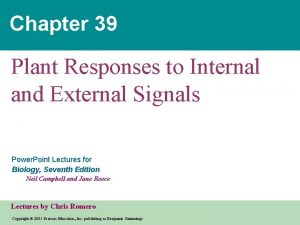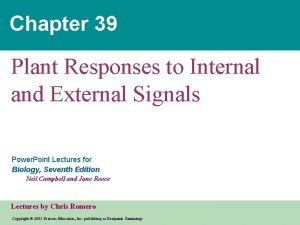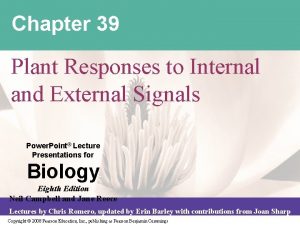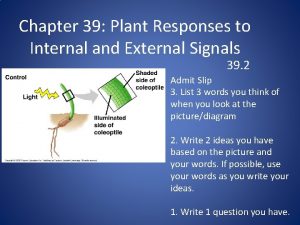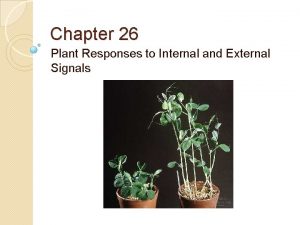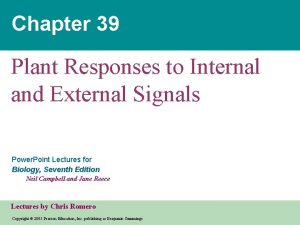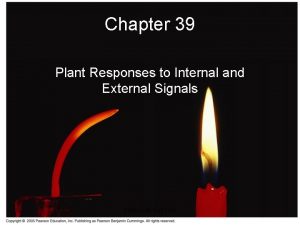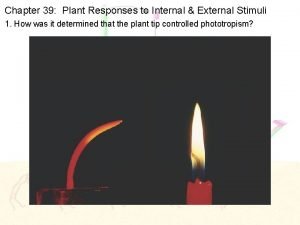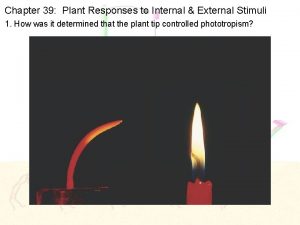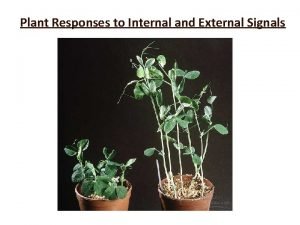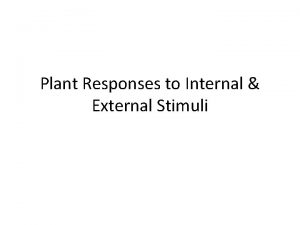Chapter 39 Plant Responses to Internal and External




































































































- Slides: 100

Chapter 39 Plant Responses to Internal and External Signals Power. Point Lectures for Biology, Seventh Edition Neil Campbell and Jane Reece Lectures by Chris Romero Copyright © 2005 Pearson Education, Inc. publishing as Benjamin Cummings

• Overview: Stimuli and a Stationary Life • Plants, being rooted to the ground – Must respond to whatever environmental change comes their way Copyright © 2005 Pearson Education, Inc. publishing as Benjamin Cummings

• For example, the bending of a grass seedling toward light – Begins with the plant sensing the direction, quantity, and color of the light Figure 39. 1 Copyright © 2005 Pearson Education, Inc. publishing as Benjamin Cummings

• Concept 39. 1: Signal transduction pathways link signal reception to response • Plants have cellular receptors – That they use to detect important changes in their environment • For a stimulus to elicit a response – Certain cells must have an appropriate receptor Copyright © 2005 Pearson Education, Inc. publishing as Benjamin Cummings

• A potato left growing in darkness – Will produce shoots that do not appear healthy, and will lack elongated roots • These are morphological adaptations for growing in darkness – Collectively referred to as etiolation (a) Before exposure to light. A dark-grown potato has tall, spindly stems and nonexpanded leaves—morphological adaptations that enable the shoots to penetrate the soil. The roots are short, but there is little need for water absorption because little water is lost by the shoots. Figure 39. 2 a Copyright © 2005 Pearson Education, Inc. publishing as Benjamin Cummings

• After the potato is exposed to light – The plant undergoes profound changes called deetiolation, in which shoots and roots grow normally (b) After a week’s exposure to natural daylight. The potato plant begins to resemble a typical plant with broad green leaves, short sturdy stems, and long roots. This transformation begins with the reception of light by a specific pigment, phytochrome. Figure 39. 2 b Copyright © 2005 Pearson Education, Inc. publishing as Benjamin Cummings

• The potato’s response to light – Is an example of cell-signal processing CELL WALL 1 Reception CYTOPLASM 2 Transduction Relay molecules Receptor Hormone or environmental stimulus Plasma membrane Figure 39. 3 Copyright © 2005 Pearson Education, Inc. publishing as Benjamin Cummings 3 Response Activation of cellular responses

Reception • Internal and external signals are detected by receptors – Proteins that change in response to specific stimuli Copyright © 2005 Pearson Education, Inc. publishing as Benjamin Cummings

Transduction • Second messengers – Transfer and amplify signals from receptors to proteins that cause specific responses Copyright © 2005 Pearson Education, Inc. publishing as Benjamin Cummings

• An example of signal transduction in plants 2 Transduction 1 Reception 3 Response CYTOPLASM c. GMP Plasma membrane Second messenger produced Phytochrome activated by light Cell wall 2 One pathway uses c. GMP as a second messenger that activates a specific protein kinase. The other pathway involves an increase in cytoplasmic Ca 2+ that activates another specific protein kinase. Specific protein kinase 1 activated Transcription factor 1 NUCLEUS P Transcription factor 2 P Specific protein kinase 2 activated Transcription Light Translation 1 The light signal is detected by the phytochrome receptor, which then activates at least two signal transduction pathways. Ca 2+ channel opened Ca 2+ Figure 39. 4 Copyright © 2005 Pearson Education, Inc. publishing as Benjamin Cummings 3 Both pathways lead to expression of genes for proteins that function in the de-etiolation (greening) response. De-etiolation (greening) response proteins

Response • Ultimately, a signal transduction pathway – Leads to a regulation of one or more cellular activities • In most cases – These responses to stimulation involve the increased activity of certain enzymes Copyright © 2005 Pearson Education, Inc. publishing as Benjamin Cummings

Transcriptional Regulation • Transcription factors bind directly to specific regions of DNA – And control the transcription of specific genes Copyright © 2005 Pearson Education, Inc. publishing as Benjamin Cummings

Post-Translational Modification of Proteins • Post-translational modification – Involves the activation of existing proteins involved in the signal response Copyright © 2005 Pearson Education, Inc. publishing as Benjamin Cummings

De-Etioloation (“Greening”) Proteins • Many enzymes that function in certain signal responses are involved in photosynthesis directly – While others are involved in supplying the chemical precursors necessary for chlorophyll production Copyright © 2005 Pearson Education, Inc. publishing as Benjamin Cummings

• Concept 39. 2: Plant hormones help coordinate growth, development, and responses to stimuli • Hormones – Are chemical signals that coordinate the different parts of an organism Copyright © 2005 Pearson Education, Inc. publishing as Benjamin Cummings

The Discovery of Plant Hormones • Any growth response – That results in curvatures of whole plant organs toward or away from a stimulus is called a tropism – Is often caused by hormones Copyright © 2005 Pearson Education, Inc. publishing as Benjamin Cummings

• Charles Darwin and his son Francis – Conducted some of the earliest experiments on phototropism, a plant’s response to light, in the late 19 th century Copyright © 2005 Pearson Education, Inc. publishing as Benjamin Cummings

EXPERIMENT In 1880, Charles Darwin and his son Francis designed an experiment to determine what part of the coleoptile senses light. In 1913, Peter Boysen-Jensen conducted an experiment to determine how the signal for phototropism is transmitted. RESULTS Control Boysen-Jensen (1913) Darwin and Darwin (1880) Shaded side of coleoptile Light Illuminated side of coleoptile Tip removed Tip covered by opaque cap Tip covered by transparent cap Base covered by opaque shield Tip separated by gelatin block Tip separated by mica CONCLUSION In the Darwins’ experiment, a phototropic response occurred only when light could reach the tip of coleoptile. Therefore, they concluded that only the tip senses light. Boysen-Jensen observed that a phototropic response occurred if the tip was separated by a permeable barrier (gelatin) but not if separated by an impermeable solid barrier (a mineral called mica). These results suggested that the signal is a light-activated mobile chemical. Figure 39. 5 Copyright © 2005 Pearson Education, Inc. publishing as Benjamin Cummings

• In 1926, Frits Went – Extracted the chemical messenger for phototropism, auxin, by modifying earlier experiments Figure 39. 6 EXPERIMENT In 1926, Frits Went’s experiment identified how a growth-promoting chemical causes a coleoptile to grow toward light. He placed coleoptiles in the dark and removed their tips, putting some tips on agar blocks that he predicted would absorb the chemical. On a control coleoptile, he placed a block that lacked the chemical. On others, he placed blocks containing the chemical, either centered on top of the coleoptile to distribute the chemical evenly or offset to increase the concentration on one side. RESULTS The coleoptile grew straight if the chemical was distributed evenly. If the chemical was distributed unevenly, the coleoptile curved away from the side with the block, as if growing toward light, even though it was grown in the dark. Excised tip placed on agar block Growth-promoting chemical diffuses into agar block Control (agar block lacking chemical) has no effect Agar block with chemical stimulates growth Offset blocks cause curvature CONCLUSION Went concluded that a coleoptile curved toward light because its dark side had a higher concentration of the growth-promoting chemical, which he named auxin. Copyright © 2005 Pearson Education, Inc. publishing as Benjamin Cummings

A Survey of Plant Hormones Copyright © 2005 Pearson Education, Inc. publishing as Benjamin Cummings

• In general, hormones control plant growth and development – By affecting the division, elongation, and differentiation of cells • Plant hormones are produced in very low concentrations – But a minute amount can have a profound effect on the growth and development of a plant organ Copyright © 2005 Pearson Education, Inc. publishing as Benjamin Cummings

Auxin • The term auxin – Is used for any chemical substance that promotes cell elongation in different target tissues Copyright © 2005 Pearson Education, Inc. publishing as Benjamin Cummings

• Auxin transporters – Move the hormone out of the basal end of one cell, and into the apical end of neighboring cells EXPERIMENT To investigate how auxin is transported unidirectionally, researchers designed an experiment to identify the location of the auxin transport protein. They used a greenish-yellow fluorescent molecule to label antibodies that bind to the auxin transport protein. They applied the antibodies to longitudinally sectioned Arabidopsis stems. RESULTS The left micrograph shows that the auxin transport protein is not found in all tissues of the stem, but only in the xylem parenchyma. In the right micrograph, a higher magnification reveals that the auxin transport protein is primarily localized to the basal end of the cells. Cell 1 100 m Cell 2 Epidermis Cortex Phloem Xylem Pith Figure 39. 7 Basal end of cell 25 m CONCLUSION The results support the hypothesis that concentration of the auxin transport protein at the basal ends of cells is responsible for polar transport of auxin. Copyright © 2005 Pearson Education, Inc. publishing as Benjamin Cummings

The Role of Auxin in Cell Elongation • According to a model called the acid growth hypothesis – Proton pumps play a major role in the growth response of cells to auxin Copyright © 2005 Pearson Education, Inc. publishing as Benjamin Cummings

• Cell elongation in response to auxin Cross-linking cell wall polysaccharides 3 Wedge-shaped expansins, activated by low p. H, separate cellulose microfibrils from cross-linking polysaccharides. The exposed cross-linking polysaccharides are now more accessible to cell wall enzymes. Expansin 4 The enzymatic cleaving of the cross-linking CELL WALL polysaccharides allows the microfibrils to slide. The extensibility of the cell wall is increased. Turgor causes the cell to expand. Cell wall enzymes Microfibril H 2 O H+ 2 The cell wall becomes more acidic. Plasma membrane H+ Cell wall H+ H+ H+ 1 Auxin increases the activity of proton pumps. Cytoplasm Nucleus Vacuole ATP H+ Figure 39. 8 Copyright © 2005 Pearson Education, Inc. publishing as Benjamin Cummings Plasma membrane Cytoplasm 5 With the cellulose loosened, the cell can elongate.

Lateral and Adventitious Root Formation • Auxin – Is involved in the formation and branching of roots Copyright © 2005 Pearson Education, Inc. publishing as Benjamin Cummings

Auxins as Herbicides • An overdose of auxins – Can kill eudicots Copyright © 2005 Pearson Education, Inc. publishing as Benjamin Cummings

Other Effects of Auxin • Auxin affects secondary growth – By inducing cell division in the vascular cambium and influencing differentiation of secondary xylem Copyright © 2005 Pearson Education, Inc. publishing as Benjamin Cummings

Cytokinins • Cytokinins – Stimulate cell division Copyright © 2005 Pearson Education, Inc. publishing as Benjamin Cummings

Control of Cell Division and Differentiation • Cytokinins – Are produced in actively growing tissues such as roots, embryos, and fruits – Work together with auxin Copyright © 2005 Pearson Education, Inc. publishing as Benjamin Cummings

Control of Apical Dominance • Cytokinins, auxin, and other factors interact in the control of apical dominance – The ability of a terminal bud to suppress development of axillary buds Axillary buds Figure 39. 9 a Copyright © 2005 Pearson Education, Inc. publishing as Benjamin Cummings

• If the terminal bud is removed – Plants become bushier “Stump” after removal of apical bud Figure 39. 9 b Lateral branches Copyright © 2005 Pearson Education, Inc. publishing as Benjamin Cummings

Anti-Aging Effects • Cytokinins retard the aging of some plant organs – By inhibiting protein breakdown, stimulating RNA and protein synthesis, and mobilizing nutrients from surrounding tissues Copyright © 2005 Pearson Education, Inc. publishing as Benjamin Cummings

Gibberellins • Gibberellins have a variety of effects – Such as stem elongation, fruit growth, and seed germination Copyright © 2005 Pearson Education, Inc. publishing as Benjamin Cummings

Stem Elongation • Gibberellins stimulate growth of both leaves and stems • In stems – Gibberellins stimulate cell elongation and cell division Copyright © 2005 Pearson Education, Inc. publishing as Benjamin Cummings

Fruit Growth • In many plants – Both auxin and gibberellins must be present for fruit to set Copyright © 2005 Pearson Education, Inc. publishing as Benjamin Cummings

• Gibberellins are used commercially – In the spraying of Thompson seedless grapes Figure 39. 10 Copyright © 2005 Pearson Education, Inc. publishing as Benjamin Cummings

Germination • After water is imbibed, the release of gibberellins from the embryo – Signals the seeds to break dormancy and germinate 2 The aleurone responds by 2 synthesizing and secreting digestive enzymes that hydrolyze stored nutrients in the endosperm. One example is -amylase, which hydrolyzes starch. (A similar enzyme in our saliva helps in digesting bread and other starchy foods. ) 1 After a seed imbibes water, the embryo releases gibberellin (GA) as a signal to the aleurone, the thin outer layer of the endosperm. 3 Sugars and other nutrients absorbed from the endosperm by the scutellum (cotyledon) are consumed during growth of the embryo into a seedling. Aleurone Endosperm -amylase GA GA Water Radicle Scutellum (cotyledon) Figure 39. 11 Copyright © 2005 Pearson Education, Inc. publishing as Benjamin Cummings Sugar

2 The aleurone responds by 2 synthesizing and secreting digestive enzymes that hydrolyze stored nutrients in the endosperm. One example is -amylase, which hydrolyzes starch. (A similar enzyme in our saliva helps in digesting bread and other starchy foods. ) 1 After a seed imbibes water, the embryo releases gibberellin (GA) as a signal to the aleurone, the thin outer layer of the endosperm. 3 Sugars and other nutrients absorbed from the endosperm by the scutellum (cotyledon) are consumed during growth of the embryo into a seedling. Aleurone Endosperm -amylase GA GA Water Radicle Scutellum (cotyledon) Copyright © 2005 Pearson Education, Inc. publishing as Benjamin Cummings Sugar

Brassinosteroids • Brassinosteroids – Are similar to the sex hormones of animals – Induce cell elongation and division Copyright © 2005 Pearson Education, Inc. publishing as Benjamin Cummings

Abscisic Acid • Two of the many effects of abscisic acid (ABA) are – Seed dormancy – Drought tolerance Copyright © 2005 Pearson Education, Inc. publishing as Benjamin Cummings

Seed Dormancy • Seed dormancy has great survival value – Because it ensures that the seed will germinate only when there are optimal conditions Copyright © 2005 Pearson Education, Inc. publishing as Benjamin Cummings

• Precocious germination is observed in maize mutants – That lack a functional transcription factor required for ABA to induce expression of certain genes Coleoptile Figure 39. 12 Copyright © 2005 Pearson Education, Inc. publishing as Benjamin Cummings

Drought Tolerance • ABA is the primary internal signal – That enables plants to withstand drought Copyright © 2005 Pearson Education, Inc. publishing as Benjamin Cummings

Ethylene • Plants produce ethylene – In response to stresses such as drought, flooding, mechanical pressure, injury, and infection Copyright © 2005 Pearson Education, Inc. publishing as Benjamin Cummings

The Triple Response to Mechanical Stress • Ethylene induces the triple response – Which allows a growing shoot to avoid obstacles EXPERIMENT Germinating pea seedlings were placed in the dark and exposed to varying ethylene concentrations. Their growth was compared with a control seedling not treated with ethylene. RESULTS All the treated seedlings exhibited the triple response. Response was greater with increased concentration. 0. 00 0. 10 0. 20 0. 40 0. 80 Ethylene concentration (parts per million) Figure 39. 13 CONCLUSION Ethylene induces the triple response in pea seedlings, with increased ethylene concentration causing increased response. Copyright © 2005 Pearson Education, Inc. publishing as Benjamin Cummings

• Ethylene-insensitive mutants – Fail to undergo the triple response after exposure to ethylene ein mutant Figure 39. 14 a Copyright © 2005 Pearson Education, Inc. publishing as Benjamin Cummings

• Other types of mutants – Undergo the triple response in air but do not respond to inhibitors of ethylene synthesis ctr mutant Figure 39. 14 b Copyright © 2005 Pearson Education, Inc. publishing as Benjamin Cummings

• A summary of ethylene signal transduction mutants Control Wild-type Ethylene insensitive (ein) Ethylene overproducing (eto) Constitutive triple response (ctr) Figure 39. 15 Copyright © 2005 Pearson Education, Inc. publishing as Benjamin Cummings Ethylene added Ethylene synthesis inhibitor

Apoptosis: Programmed Cell Death • A burst of ethylene – Is associated with the programmed destruction of cells, organs, or whole plants Copyright © 2005 Pearson Education, Inc. publishing as Benjamin Cummings

Leaf Abscission • A change in the balance of auxin and ethylene controls leaf abscission – The process that occurs in autumn when a leaf falls 0. 5 mm Protective layer Abscission layer Stem Petiole Figure 39. 16 Copyright © 2005 Pearson Education, Inc. publishing as Benjamin Cummings

Fruit Ripening • A burst of ethylene production in the fruit – Triggers the ripening process Copyright © 2005 Pearson Education, Inc. publishing as Benjamin Cummings

Systems Biology and Hormone Interactions • Interactions between hormones and their signal transduction pathways – Make it difficult to predict what effect a genetic manipulation will have on a plant • Systems biology seeks a comprehensive understanding of plants – That will permit successful modeling of plant functions Copyright © 2005 Pearson Education, Inc. publishing as Benjamin Cummings

• Concept 39. 3: Responses to light are critical for plant success • Light cues many key events in plant growth and development • Effects of light on plant morphology – Are what plant biologists call photomorphogenesis Copyright © 2005 Pearson Education, Inc. publishing as Benjamin Cummings

• Plants not only detect the presence of light – But also its direction, intensity, and wavelength (color) • A graph called an action spectrum – Depicts the relative response of a process to different wavelengths of light Copyright © 2005 Pearson Education, Inc. publishing as Benjamin Cummings

• Action spectra – Are useful in the study of any process that depends on light EXPERIMENT Researchers exposed maize (Zea mays) coleoptiles to violet, blue, green, yellow, orange, and red light to test which wavelengths stimulate the phototropic bending toward light. Phototropic effectiveness relative to 436 nm RESULTS The graph below shows phototropic effectiveness (curvature per photon) relative to effectiveness of light with a wavelength of 436 nm. The photo collages show coleoptiles before and after 90 -minute exposure to side lighting of the indicated colors. Pronounced curvature occurred only with wavelengths below 500 nm and was greatest with blue light. 1. 0 0. 8 0. 6 0. 4 0. 2 0 400 450 500 550 600 650 700 Wavelength (nm) Light Time = 0 min. Time = 90 min. Figure 39. 17 CONCLUSION The phototropic bending toward light is caused by a photoreceptor that is sensitive to blue and violet light, particularly blue light. Copyright © 2005 Pearson Education, Inc. publishing as Benjamin Cummings

• Research on action spectra and absorption spectra of pigments – Led to the identification of two major classes of light receptors: blue-light photoreceptors and phytochromes Copyright © 2005 Pearson Education, Inc. publishing as Benjamin Cummings

Blue-Light Photoreceptors • Various blue-light photoreceptors – Control hypocotyl elongation, stomatal opening, and phototropism Copyright © 2005 Pearson Education, Inc. publishing as Benjamin Cummings

Phytochromes as Photoreceptors • Phytochromes – Regulate many of a plant’s responses to light throughout its life Copyright © 2005 Pearson Education, Inc. publishing as Benjamin Cummings

Phytochromes and Seed Germination • Studies of seed germination – Led to the discovery of phytochromes Copyright © 2005 Pearson Education, Inc. publishing as Benjamin Cummings

• In the 1930 s, scientists at the U. S. Department of Agriculture – Determined the action spectrum for lightinduced germination of lettuce seeds Dark (control) Dark Copyright © 2005 Pearson Education, Inc. publishing as Benjamin Cummings

EXPERIMENT During the 1930 s, USDA scientists briefly exposed batches of lettuce seeds to red light or far-red light to test the effects on germination. After the light exposure, the seeds were placed in the dark, and the results were compared with control seeds that were not exposed to light. RESULTS The bar below each photo indicates the sequence of red-light exposure, far-red light exposure, and darkness. The germination rate increased greatly in groups of seeds that were last exposed to red light (left). Germination was inhibited in groups of seeds that were last exposed to far-red light (right). Dark (control) Red Dark Red Far-red Red Figure 39. 18 Red Far-red Dark Red Far-red CONCLUSION Red light stimulated germination, and far-red light inhibited germination. The final exposure was the determining factor. The effects of red and far-red light were reversible. Copyright © 2005 Pearson Education, Inc. publishing as Benjamin Cummings

• A phytochrome – Is the photoreceptor responsible for the opposing effects of red and far-red light A phytochrome consists of two identical proteins joined to form one functional molecule. Each of these proteins has two domains. Chromophore Photoreceptor activity. One domain, which functions as the photoreceptor, is covalently bonded to a nonprotein pigment, or chromophore. Kinase activity. The other domain has protein kinase activity. The photoreceptor domains interact with the kinase domains to link light reception to cellular responses triggered by the kinase. Figure 39. 19 Copyright © 2005 Pearson Education, Inc. publishing as Benjamin Cummings

• Phytochromes exist in two photoreversible states – With conversion of Pr to Pfr triggering many developmental responses Pr Pfr Red light Responses: seed germination, control of flowering, etc. Synthesis Far-red light Figure 39. 20 Slow conversion in darkness (some plants) Copyright © 2005 Pearson Education, Inc. publishing as Benjamin Cummings Enzymatic destruction

Phytochromes and Shade Avoidance • The phytochrome system – Also provides the plant with information about the quality of light • In the “shade avoidance” response of a tree – The phytochrome ratio shifts in favor of Pr when a tree is shaded Copyright © 2005 Pearson Education, Inc. publishing as Benjamin Cummings

Biological Clocks and Circadian Rhythms • Many plant processes – Oscillate during the day Copyright © 2005 Pearson Education, Inc. publishing as Benjamin Cummings

• Many legumes – Lower their leaves in the evening and raise them in the morning Figure 39. 21 Noon Copyright © 2005 Pearson Education, Inc. publishing as Benjamin Cummings Midnight

• Cyclical responses to environmental stimuli are called circadian rhythms – And are approximately 24 hours long – Can be entrained to exactly 24 hours by the day/night cycle Copyright © 2005 Pearson Education, Inc. publishing as Benjamin Cummings

The Effect of Light on the Biological Clock • Phytochrome conversion marks sunrise and sunset – Providing the biological clock with environmental cues Copyright © 2005 Pearson Education, Inc. publishing as Benjamin Cummings

Photoperiodism and Responses to Seasons • Photoperiod, the relative lengths of night and day – Is the environmental stimulus plants use most often to detect the time of year • Photoperiodism – Is a physiological response to photoperiod Copyright © 2005 Pearson Education, Inc. publishing as Benjamin Cummings

Photoperiodism and Control of Flowering • Some developmental processes, including flowering in many species – Requires a certain photoperiod Copyright © 2005 Pearson Education, Inc. publishing as Benjamin Cummings

Critical Night Length • In the 1940 s, researchers discovered that flowering and other responses to photoperiod – Are actually controlled by night length, not day length EXPERIMENT During the 1940 s, researchers conducted experiments in which periods of darkness were interrupted with brief exposure to light to test how the light and dark portions of a photoperiod affected flowering in “short-day” and “long-day” plants. RESULTS Darkness 24 hours Flash of light Critical dark period Light (a) “Short-day” plants flowered only if a period of continuous darkness was longer than a critical dark period for that particular species (13 hours in this example). A period of darkness can be ended by a brief exposure to light. Figure 39. 22 (b) “Long-day” plants flowered only if a period of continuous darkness was shorter than a critical dark period for that particular species (13 hours in this example). CONCLUSION The experiments indicated that flowering of each species was determined by a critical period of darkness (“critical night length”) for that species, not by a specific period of light. Therefore, “short-day” plants are more properly called “long-night” plants, and “long-day” plants are really “short-night” plants. Copyright © 2005 Pearson Education, Inc. publishing as Benjamin Cummings

• Action spectra and photoreversibility experiments – Show that phytochrome is the pigment that receives red light, which can interrupt the nighttime portion of the photoperiod EXPERIMENT A unique characteristic of phytochrome is reversibility in response to red and far-red light. To test whether phytochrome is the pigment measuring interruption of dark periods, researchers observed how flashes of red light and far-red light affected flowering in “short-day” and “long-day” plants. 24 20 R FR R Hours 16 R FR R Critical dark period RESULTS 12 8 4 0 Short-day (long-night) plant Long-day (short-night) plant CONCLUSION Figure 39. 23 A flash of red light shortened the dark period. A subsequent flash of far-red light canceled the red light’s effect. If a red flash followed a far-red flash, the effect of the far-red light was canceled. This reversibility indicated that it is phytochrome that measures the interruption of dark periods. Copyright © 2005 Pearson Education, Inc. publishing as Benjamin Cummings

A Flowering Hormone? • The flowering signal, not yet chemically identified – Is called florigen, and it may be a hormone or a change in relative concentrations of multiple hormones Copyright © 2005 Pearson Education, Inc. publishing as Benjamin Cummings

EXPERIMENT To test whethere is a flowering hormone, researchers conducted an experiment in which a plant that had been induced to flower by photoperiod was grafted to a plant that had not been induced. RESULTS Plant subjected to photoperiod that does not induce flowering Plant subjected to photoperiod that induces flowering Graft Time (several weeks) Figure 39. 24 CONCLUSION Both plants flowered, indicating the transmission of a flower-inducing substance. In some cases, the transmission worked even if one was a short-day plant and the other was a long-day plant. Copyright © 2005 Pearson Education, Inc. publishing as Benjamin Cummings

Meristem Transition and Flowering • Whatever combination of environmental cues and internal signals is necessary for flowering to occur – The outcome is the transition of a bud’s meristem from a vegetative to a flowering state Copyright © 2005 Pearson Education, Inc. publishing as Benjamin Cummings

• Concept 39. 4: Plants respond to a wide variety of stimuli other than light • Because of their immobility – Plants must adjust to a wide range of environmental circumstances through developmental and physiological mechanisms Copyright © 2005 Pearson Education, Inc. publishing as Benjamin Cummings

Gravity • Response to gravity – Is known as gravitropism • Roots show positive gravitropism • Stems show negative gravitropism Copyright © 2005 Pearson Education, Inc. publishing as Benjamin Cummings

• Plants may detect gravity by the settling of statoliths – Specialized plastids containing dense starch grains Statoliths Figure 39. 25 a, b (a) Copyright © 2005 Pearson Education, Inc. publishing as Benjamin Cummings (b) 20 m

Mechanical Stimuli • The term thigmomorphogenesis – Refers to the changes in form that result from mechanical perturbation Copyright © 2005 Pearson Education, Inc. publishing as Benjamin Cummings

• Rubbing the stems of young plants a couple of times daily – Results in plants that are shorter than controls Figure 39. 26 Copyright © 2005 Pearson Education, Inc. publishing as Benjamin Cummings

• Growth in response to touch – Is called thigmotropism – Occurs in vines and other climbing plants Copyright © 2005 Pearson Education, Inc. publishing as Benjamin Cummings

• Rapid leaf movements in response to mechanical stimulation – Are examples of transmission of electrical impulses called action potentials (a) Unstimulated (b) Stimulated Side of pulvinus with flaccid cells Leaflets after stimulation Side of pulvinus with turgid cells Pulvinus (motor organ) Figure 39. 27 a–c (c) Motor organs Copyright © 2005 Pearson Education, Inc. publishing as Benjamin Cummings Vein 0. 5 m

Environmental Stresses • Environmental stresses – Have a potentially adverse effect on a plant’s survival, growth, and reproduction – Can have a devastating impact on crop yields in agriculture Copyright © 2005 Pearson Education, Inc. publishing as Benjamin Cummings

Drought • During drought – Plants respond to water deficit by reducing transpiration – Deeper roots continue to grow Copyright © 2005 Pearson Education, Inc. publishing as Benjamin Cummings

Flooding • Enzymatic destruction of cells – Creates air tubes that help plants survive oxygen deprivation during flooding Vascular cylinder Air tubes Epidermis Figure 39. 28 a, b (a) Control root (aerated) 100 m Copyright © 2005 Pearson Education, Inc. publishing as Benjamin Cummings (b) Experimental root (nonaerated) 100 m

Salt Stress • Plants respond to salt stress by producing solutes tolerated at high concentrations – Keeping the water potential of cells more negative than that of the soil solution Copyright © 2005 Pearson Education, Inc. publishing as Benjamin Cummings

Heat Stress • Heat-shock proteins – Help plants survive heat stress Copyright © 2005 Pearson Education, Inc. publishing as Benjamin Cummings

Cold Stress • Altering lipid composition of membranes – Is a response to cold stress Copyright © 2005 Pearson Education, Inc. publishing as Benjamin Cummings

• Concept 39. 5: Plants defend themselves against herbivores and pathogens • Plants counter external threats – With defense systems that deter herbivory and prevent infection or combat pathogens Copyright © 2005 Pearson Education, Inc. publishing as Benjamin Cummings

Defenses Against Herbivores • Herbivory, animals eating plants – Is a stress that plants face in any ecosystem • Plants counter excessive herbivory – With physical defenses such as thorns – With chemical defenses such as distasteful or toxic compounds Copyright © 2005 Pearson Education, Inc. publishing as Benjamin Cummings

• Some plants even “recruit” predatory animals – That help defend the plant against specific herbivores 4 Recruitment of parasitoid wasps that lay their eggs within caterpillars 3 Synthesis and release of volatile attractants 1 Wounding 1 Chemical in saliva 2 Signal transduction pathway Figure 39. 29 Copyright © 2005 Pearson Education, Inc. publishing as Benjamin Cummings

Defenses Against Pathogens • A plant’s first line of defense against infection – Is the physical barrier of the plant’s “skin, ” the epidermis and the periderm • Once a pathogen invades a plant – The plant mounts a chemical attack as a second line of defense that kills the pathogen and prevents its spread Copyright © 2005 Pearson Education, Inc. publishing as Benjamin Cummings

• The second defense system – Is enhanced by the plant’s inherited ability to recognize certain pathogens Copyright © 2005 Pearson Education, Inc. publishing as Benjamin Cummings

Gene-for-Gene Recognition • A virulent pathogen – Is one that a plant has little specific defense against • An avirulent pathogen – Is one that may harm but not kill the host plant Copyright © 2005 Pearson Education, Inc. publishing as Benjamin Cummings

• Gene-for-gene recognition is a widespread form of plant disease resistance – That involves recognition of pathogen-derived molecules by the protein products of specific plant disease resistance (R) genes Copyright © 2005 Pearson Education, Inc. publishing as Benjamin Cummings

• A pathogen is avirulent – If it has a specific Avr gene corresponding to a particular R allele in the host plant Receptor coded by R allele Signal molecule (ligand) from Avr gene product R Avr allele Avirulent pathogen Figure 39. 30 a Plant cell is resistant (a) If an Avr allele in the pathogen corresponds to an R allele in the host plant, the host plant will have resistance, making the pathogen avirulent. R alleles probably code for receptors in the plasma membranes of host plant cells. Avr alleles produce compounds that can act as ligands, binding to receptors in host plant cells. Copyright © 2005 Pearson Education, Inc. publishing as Benjamin Cummings

• If the plant host lacks the R gene that counteracts the pathogen’s Avr gene – Then the pathogen can invade and kill the plant R No Avr allele; virulent pathogen Plant cell becomes diseased Avr allele Virulent pathogen No R allele; plant cell becomes diseased Figure 39. 30 b (b) If there is no gene-for-gene recognition because of one of the above three conditions, the pathogen will be virulent, causing disease to develop. Copyright © 2005 Pearson Education, Inc. publishing as Benjamin Cummings

Plant Responses to Pathogen Invasions • A hypersensitive response against an avirulent pathogen – Seals off the infection and kills both pathogen and host cells in the region of the infection 4 Before they die, infected cells release a chemical signal, probably salicylic acid. 3 In a hypersensitive response (HR), plant cells produce antimicrobial molecules, seal off infected areas by modifying their walls, and then destroy themselves. This localized response produces lesions and protects other parts of an infected leaf. 2 This identification step triggers a signal transduction pathway. 1 Specific resistance is based on the binding of ligands from the pathogen to receptors in plant cells. Figure 39. 31 4 3 2 Signal 5 The signal is distributed to the rest of the plant. 5 Hypersensitive response Signal transduction pathway 6 Acquired 7 resistance 1 Avirulent pathogen R-Avr recognition and hypersensitive response Copyright © 2005 Pearson Education, Inc. publishing as Benjamin Cummings Systemic acquired resistance 6 In cells remote from the infection site, the chemical initiates a signal transduction pathway. 7 Systemic acquired resistance is activated: the production of molecules that help protect the cell against a diversity of pathogens for several days.

Systemic Acquired Resistance • Systemic acquired resistance (SAR) – Is a set of generalized defense responses in organs distant from the original site of infection – Is triggered by the signal molecule salicylic acid Copyright © 2005 Pearson Education, Inc. publishing as Benjamin Cummings
 Chapter 39 plant responses to internal and external signals
Chapter 39 plant responses to internal and external signals Plant responses to internal and external signals
Plant responses to internal and external signals Chapter 25 plant responses and adaptations
Chapter 25 plant responses and adaptations Chapter 25 plant responses and adaptations
Chapter 25 plant responses and adaptations Respond to
Respond to Plant hormones and responses
Plant hormones and responses The stationary life
The stationary life Accounting information system chapter 1
Accounting information system chapter 1 Chapter 10 stress responses and stress management
Chapter 10 stress responses and stress management Plant oarts
Plant oarts What is stimulus
What is stimulus External users of accounting information are
External users of accounting information are Key internal and external stakeholders
Key internal and external stakeholders Difference between internal and external stimuli
Difference between internal and external stimuli Types of social control
Types of social control Internal and external factors of nationalism
Internal and external factors of nationalism Reliability test in research
Reliability test in research Internal vs external qc
Internal vs external qc Quality control blood bank
Quality control blood bank Stakeholders internal and external
Stakeholders internal and external Internal naris
Internal naris Internal and external issues template
Internal and external issues template Interrupt service routine in 8051
Interrupt service routine in 8051 External fertilization birds
External fertilization birds Internal and external components of a computer
Internal and external components of a computer Crescent gear pump
Crescent gear pump External dtd
External dtd Internal and external conflict
Internal and external conflict Posterior intercostal arteries
Posterior intercostal arteries Types of finishing line
Types of finishing line Internal and external stimulus
Internal and external stimulus Internal and external nares
Internal and external nares Disk operating system
Disk operating system Internal and external customers
Internal and external customers Internal and external conflict
Internal and external conflict 5 communication process
5 communication process Internal finish line in rpd
Internal finish line in rpd External and internal character traits
External and internal character traits Internal memory and external memory
Internal memory and external memory External assessment in strategic management
External assessment in strategic management Structural inertia resistance to change
Structural inertia resistance to change Economic environment factors
Economic environment factors Internal barriers in communication
Internal barriers in communication Internal and external hip rotation
Internal and external hip rotation Going concern principle example in real life
Going concern principle example in real life Inline internal and external javascript
Inline internal and external javascript Internal users of accounting information
Internal users of accounting information Internal business correspondence
Internal business correspondence Version in obstetrics
Version in obstetrics Respiratory system learning objectives
Respiratory system learning objectives Principles of foregrounding
Principles of foregrounding Internal forces that shape the earth
Internal forces that shape the earth Principle of external fixation
Principle of external fixation External flow vs internal flow
External flow vs internal flow Internal and external evaluation
Internal and external evaluation Solicited internal proposal
Solicited internal proposal External environments and accountability of schools
External environments and accountability of schools Strategic management ppt chapter 1
Strategic management ppt chapter 1 External strategic management audit
External strategic management audit Competition in virtually all industries is
Competition in virtually all industries is Efe matrix of apple
Efe matrix of apple Internal and external assessment in strategic management
Internal and external assessment in strategic management Internal and external assessment in strategic management
Internal and external assessment in strategic management What is external audit in strategic management
What is external audit in strategic management The external assessment in strategic management
The external assessment in strategic management Labled
Labled Landmarks of mandible
Landmarks of mandible Defamiliarization
Defamiliarization Internal and external writing
Internal and external writing Internal time wasters
Internal time wasters Internal and external sort
Internal and external sort External structure of the word
External structure of the word Internal vs external conflict
Internal vs external conflict Internal sorting and external sorting
Internal sorting and external sorting Difference between internal and external reporting
Difference between internal and external reporting Dtd internal and external
Dtd internal and external Cow eye muscles
Cow eye muscles Frankenstein main conflict
Frankenstein main conflict Conflict in the crucible
Conflict in the crucible Definition external conflict
Definition external conflict Internal bevel incision
Internal bevel incision Service delivery mechanism
Service delivery mechanism Are platyhelminthes acoelomates
Are platyhelminthes acoelomates Literary conflict
Literary conflict Internal and external business environment
Internal and external business environment Internal versus external flow
Internal versus external flow Romeo and juliet conflict
Romeo and juliet conflict External nares
External nares External sovereignty
External sovereignty Internal and external respiration
Internal and external respiration Function of internal intercostal muscles
Function of internal intercostal muscles One subcategory of external conflict is
One subcategory of external conflict is External vs internal combustion engine
External vs internal combustion engine Internal documentation in writing
Internal documentation in writing Internal and external commands in ms dos
Internal and external commands in ms dos Mc respiration
Mc respiration How are internal and external respiration alike
How are internal and external respiration alike Internal and external growth strategy
Internal and external growth strategy Tronsmo plant pathology and plant diseases download
Tronsmo plant pathology and plant diseases download Tronsmo plant pathology and plant diseases download
Tronsmo plant pathology and plant diseases download Albugo eye
Albugo eye
